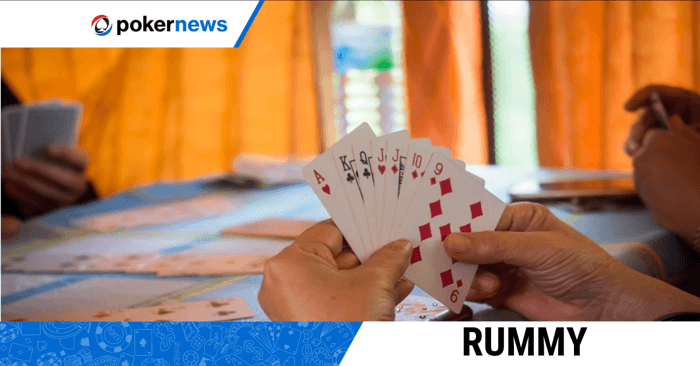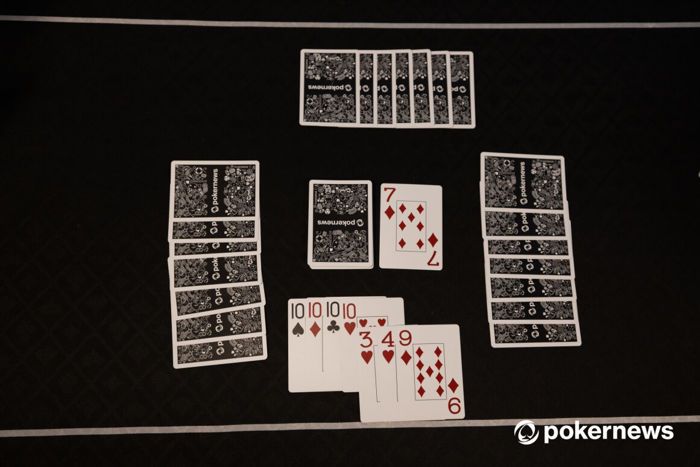Mastering Indian Rummy - Rules, Strategy, and Engaging Gameplay

Mastering Indian Rummy offers a culturally rich and engaging gaming experience, deeply rooted in its regional significance. The PokerNews team have produced this article to provide insights into the rules and variations that distinguish Indian Rummy from its standard counterpart. The blend of strategic gameplay and cultural details makes Indian Rummy a fascinating card game.
Rules of Indian Rummy
Indian Rummy introduces rules that set it apart from standard Rummy, contributing to its uniqueness. One notable difference is the number of cards dealt to each player, with Indian Rummy typically involving ten cards per player. Meld requirements vary as well, with players aiming to form sets and runs with at least three cards of the same rank or suit. Unlike standard Rummy, where a player declares once their hand is fully melded, Indian Rummy introduces continuous declaration. This allows players to declare multiple times during a single hand.

Scoring variations further differentiate Indian Rummy. While the basic principles of melding and minimizing unmatched cards remain, specific point systems may vary. For instance, in Indian Rummy, the value of unmatched cards is often higher than in standard Rummy. Additionally, players might encounter unique scoring scenarios tied to specific meld combinations or declaration patterns.
Winning Strategy for Indian Rummy
Efficient card management is a key component of a successful strategy in Indian Rummy. This includes smart discarding to minimize risks, picking up cards from the discard pile, and organizing the hand for melding opportunities.
Maximizing points becomes a focal point in Indian Rummy strategy. While minimizing unmatched cards is a common goal, players need to capitalize on scoring opportunities tied to cultural variations. This may involve recognizing the value of unique meld combinations or leveraging the continuous declaration aspect to pick up points.
Why Indian Rummy is Enjoyable to Play
Indian Rummy is not just a card game; it's a cultural experience that captivates players with its enjoyable and enriching elements. One of the key factors contributing to its popularity is the richness embedded in the gameplay. The game provides a unique platform for players to immerse themselves in the diverse traditions of Indian culture, adding an extra layer of enjoyment to each hand.
The variety of regional styles and rules in Indian Rummy is another aspect that contributes to its fun factor. Different regions may have their variations and preferences, introducing players to new challenges and strategies.
Check out our other Card Games:
FAQs - Indian Rummy
What are the regional variations in Indian Rummy, and do they impact the gameplay significantly?
Indian Rummy exhibits diverse regional variations, with each region infusing its own rules and preferences into the game. While the core principles remain consistent, these variations can significantly impact gameplay. Differences may include the number of cards dealt, specific meld combinations, or variations in scoring. Players familiar with various regional styles gain a broader understanding of the game, allowing them to adapt to different rule sets.
How does the cultural context influence the strategies used in Indian Rummy, and are there universal tactics?
The cultural context influences the strategies employed in Indian Rummy. Cultural nuances shape players' preferences, affecting their approach to melding, discarding, and overall gameplay. While there are universal tactics applicable across variations, such as efficient card management and strategic melding, players often tailor their strategies to align with the cultural aspects prevalent in their region, showcasing the adaptable and dynamic nature of Indian Rummy.
Can Indian Rummy be played with different deck styles or specific regional card sets?
Yes, Indian Rummy can be played with different deck styles or specific regional card sets. While the standard 52-card deck is commonly used, regional variations may introduce unique decks or card sets. Some regions prefer playing with decks featuring regional illustrations or specific suits, adding an extra layer of cultural richness to the game.
Are there specific occasions or festivals when Indian Rummy is traditionally played, and what makes them special?
Indian Rummy is traditionally played during various occasions and festivals, enhancing the cultural significance of these events. Festivals such as Diwali often involve family gatherings where Indian Rummy becomes a prominent source of entertainment. The game's strategic and social elements contribute to the festive atmosphere, making these occasions memorable and special.
What are the key elements that contribute to the social aspect of playing Indian Rummy, especially in a group setting?
The social aspect of playing Indian Rummy in a group setting is enriched by several key elements. The game fosters communication, laughter, and friendly banter among players. The shared experience of strategizing and competing creates a sense of camaraderie. Additionally, the cultural context and regional variations embedded in the game provide talking points, fostering deeper connections among players. In group settings, Indian Rummy becomes a catalyst for social interaction, making it an integral part of communal celebrations and gatherings.
